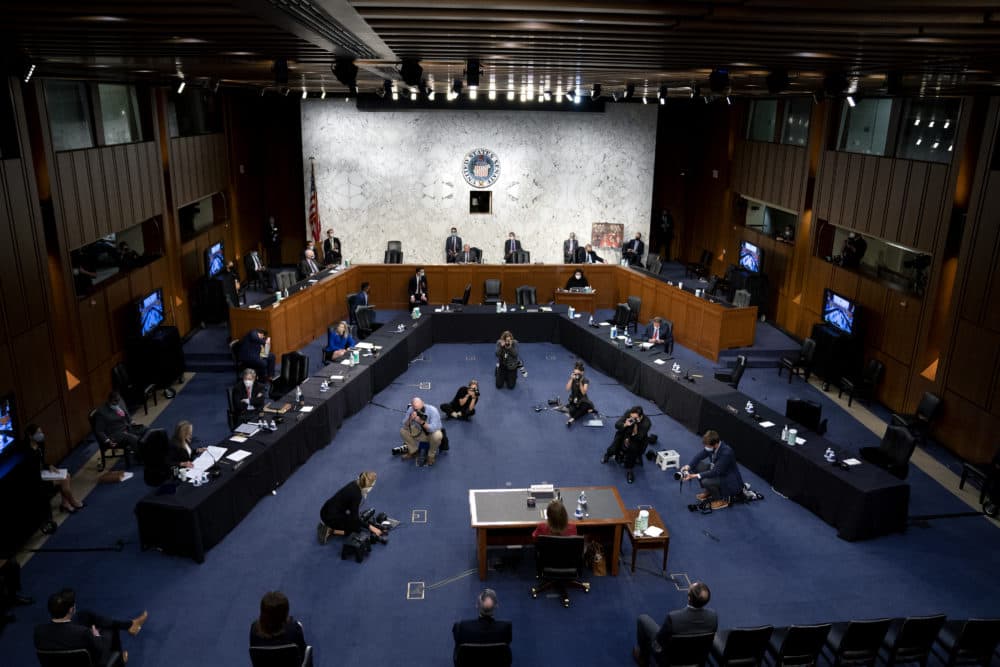Advertisement
Commentary
Amy Coney Barrett May Be An ‘Originalist.’ But It’s Not 1787, And The Text Isn’t Always The Text

Is the Air Force unconstitutional? Sounds like a stupid question. But if you’ve been listening to the Senate hearings to consider the nomination of Judge Amy Coney Barrett to the Supreme Court, you would have reason to think otherwise.
Barrett has been proud to claim the mantle of originalism, popularized by her mentor Antonin Scalia. In her words, originalism means that the constitution’s meaning does not change over time. It retains the “public meaning” it had when it was drafted in the 18th century. “The text is text,” she said in her testimony, “and I understand it to have the meaning that it had at the time people ratified it. It does not change over time, and it is not up to me to update it.” According to Barrett, “The law stays the same” even if it was written two centuries ago.
The benefit of this method, according to Barrett, is that it keeps judges from infusing law with their own preferences. “A judge must apply the law as it is written, not as she wishes it were.”
The constitution is written at a level of generality that demands interpretation.
This simplistic view of what judges do is as misleading as it is common. How often have we heard that “judges should apply the law not make the law”? But the nature of legal texts is that they are static and have to be applied in new contexts.
There has never been a difficult constitutional question in our history that could be decided by the text alone. The constitution is written at a level of generality that demands interpretation.
Does the “liberty” protected by the Fourteenth Amendment include the right to have access to birth control pills? Judges have to decide, even if the text is not clear and such pills did not exist at the time of the drafting.
Does “freedom of speech” include the freedom to publish on the internet? Judges have to decide, even if the text is not clear and not a person alive in 1789 could have imagined HTML code.
Even easy questions demand interpretation.

Take, for example, the Air Force. The Constitution, in Article I, gives Congress the ability “to raise and support armies” and “ to provide and maintain a Navy.” No where does the constitution give the Congress the power to create an air force — which is not surprising since the Wright brothers did not invent the airplane for another century.
Does the absence of explicit authority for creating an air force mean that the U.S. Air Force is unconstitutional? The “original public meaning” of Article I would not have included any thought of airplanes. And if the “text is text” and “the law stays the same” and “does not change over time” then Congress’s creation of the Air Force in 1947 was beyond its authority.
But of course, no one thinks this. The Constitution as drafted in 1787 authorized Congress to create a military force to the full extent of what was possible at the time. One can either say that Congress’s authority should be interpreted in light of the principle that the grant of power should be interpreted as broadly today as it was then, or one can say that “armies” and “navy” should be interpreted to include implicitly an air force. Either method leaves the explicit text behind, but is more loyal to the document than a strict interpretation would be.
When a judge says that those are the only tools available, then they are either patronizing those listening or misleading them.
The air force question is an easy question. But it requires interpretation. It requires judges to be honest that the text and the “original meaning” is incomplete at best. Even easy questions cannot be answered with those tools alone.
When a judge says that those are the only tools available, then they are either patronizing those listening or misleading them. All too often, this kind of simplistic description of what judges do is a way to hiding one’s political views and predispositions behind a patina of judicial restraint.
If you think the Air Force is constitutional, then the text is not always the text. And you should be honest about that.
